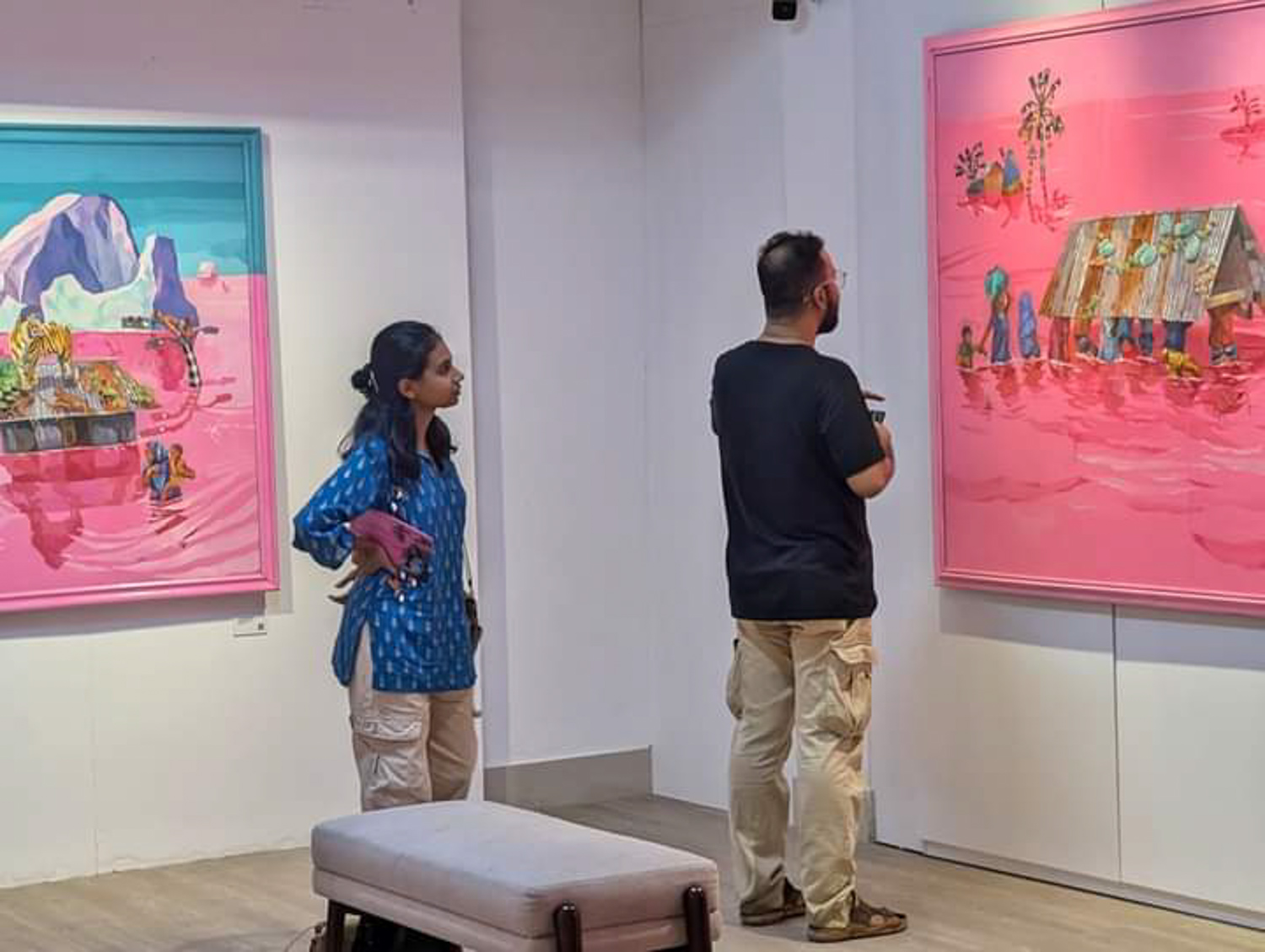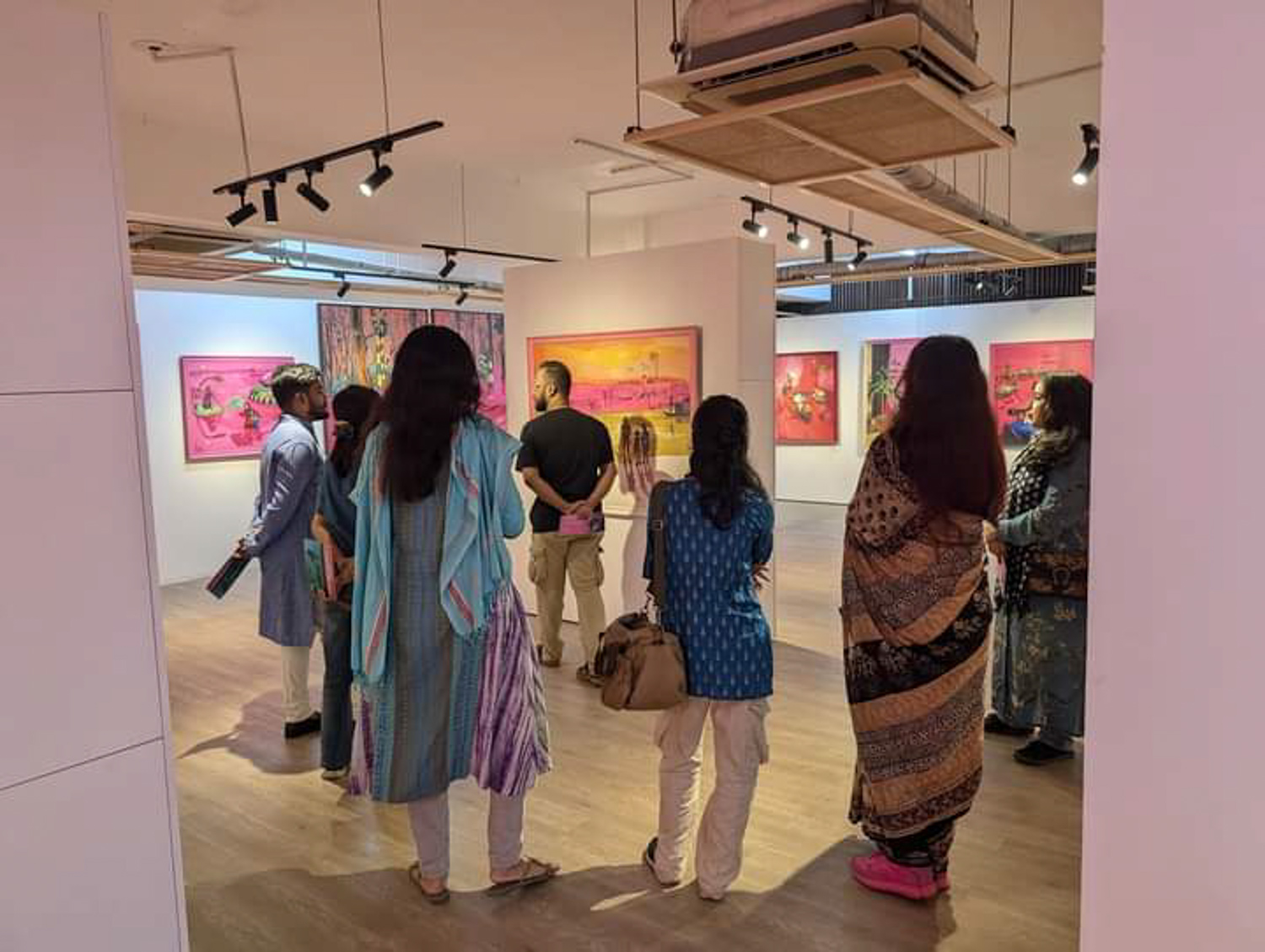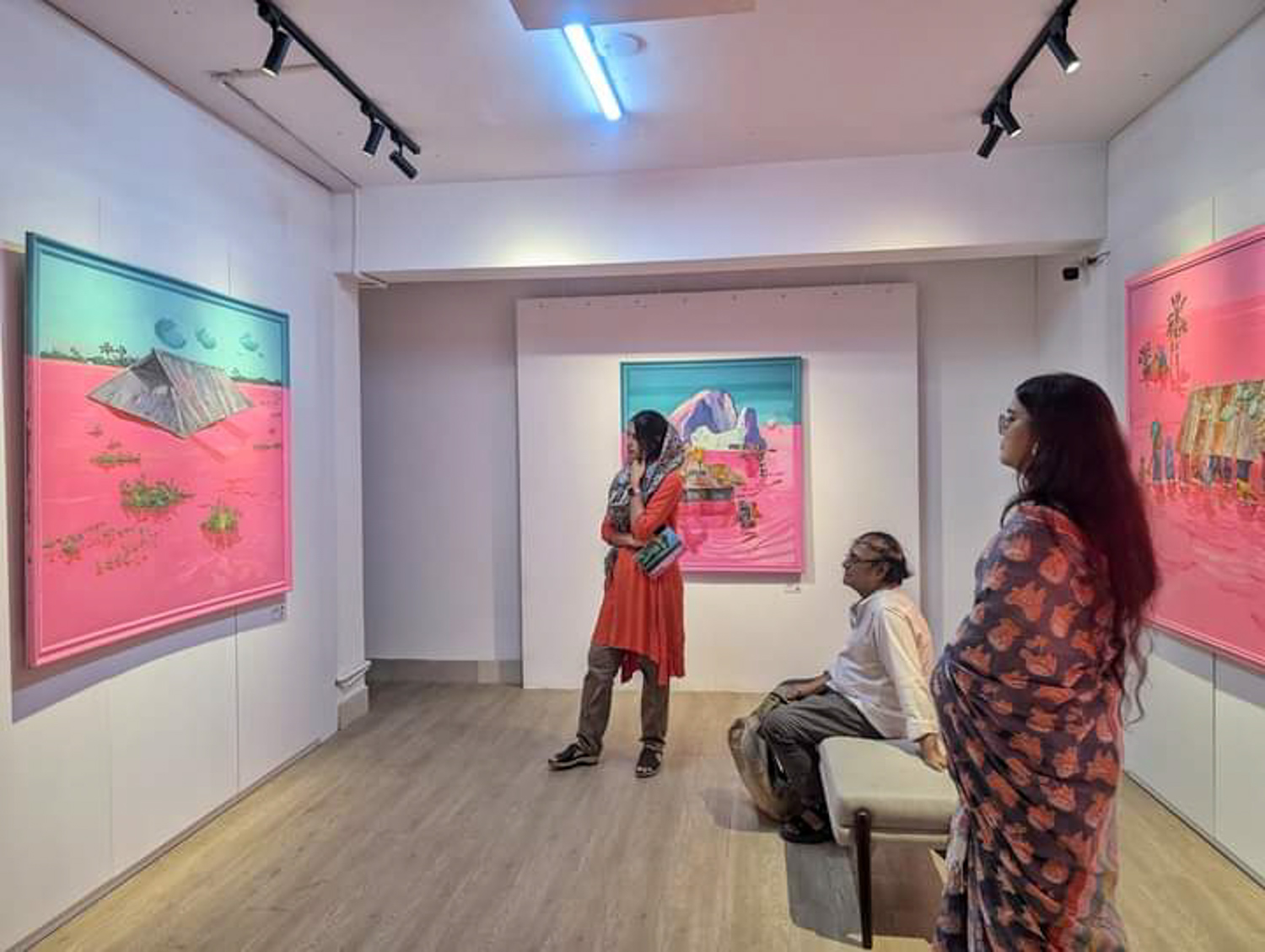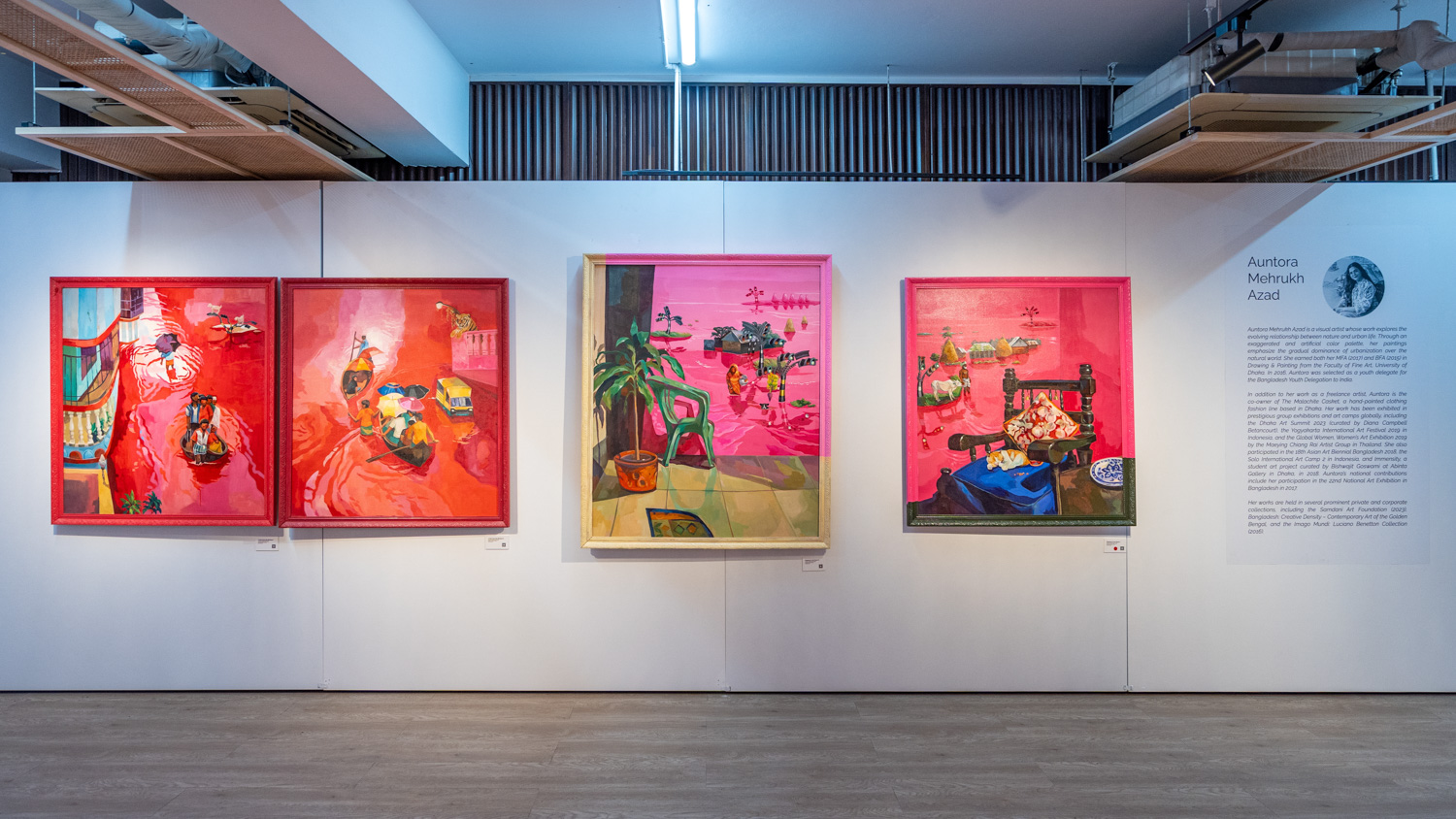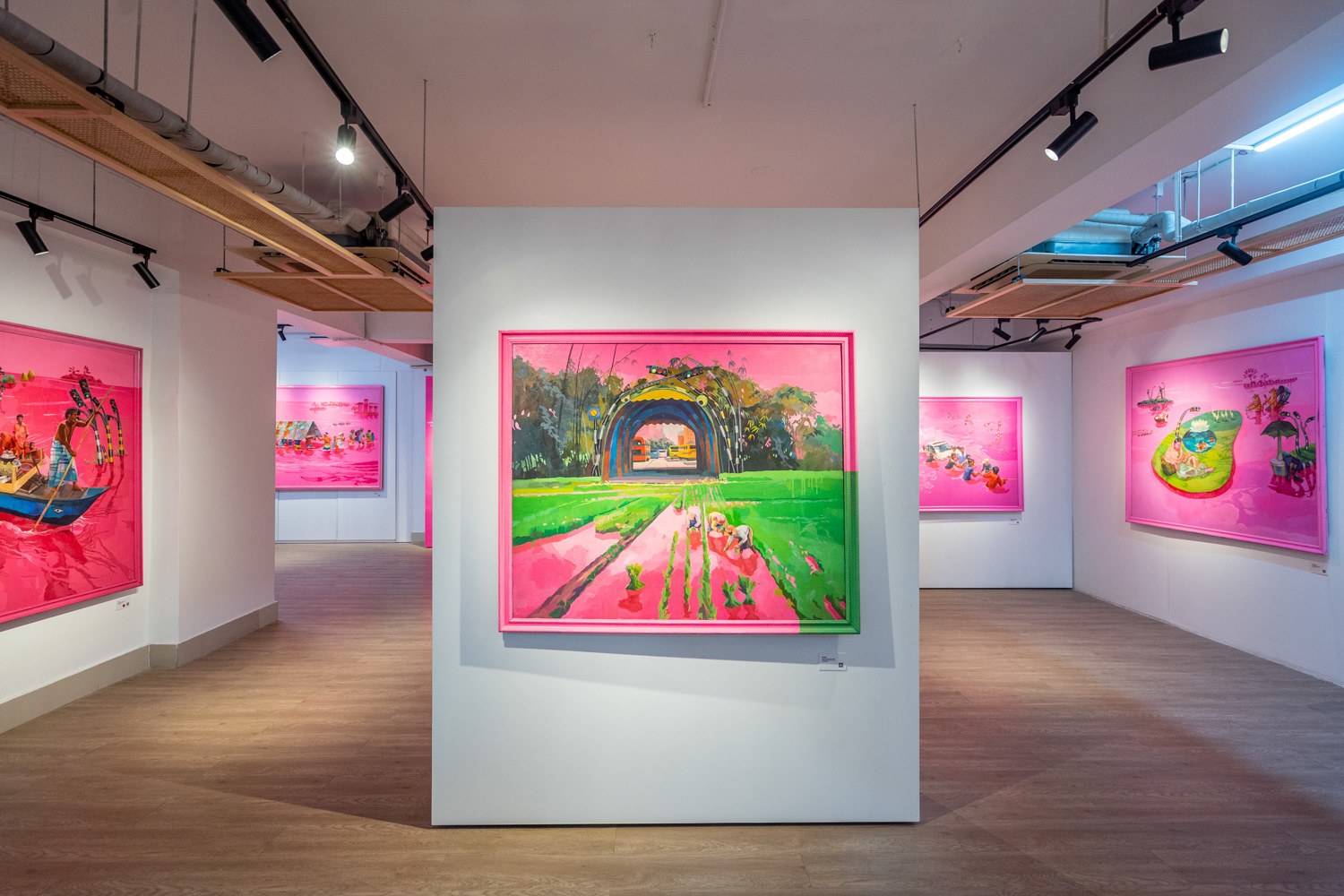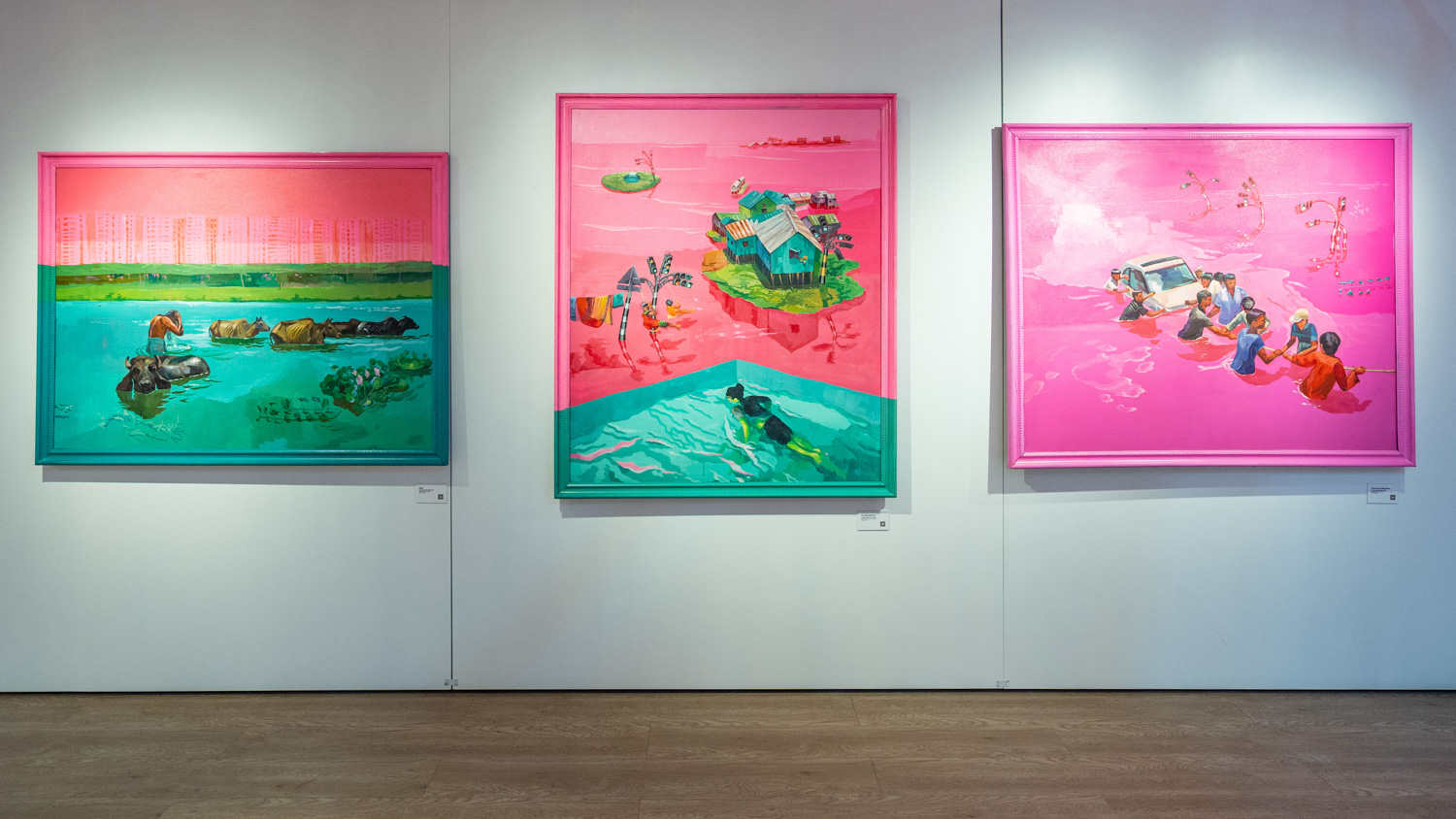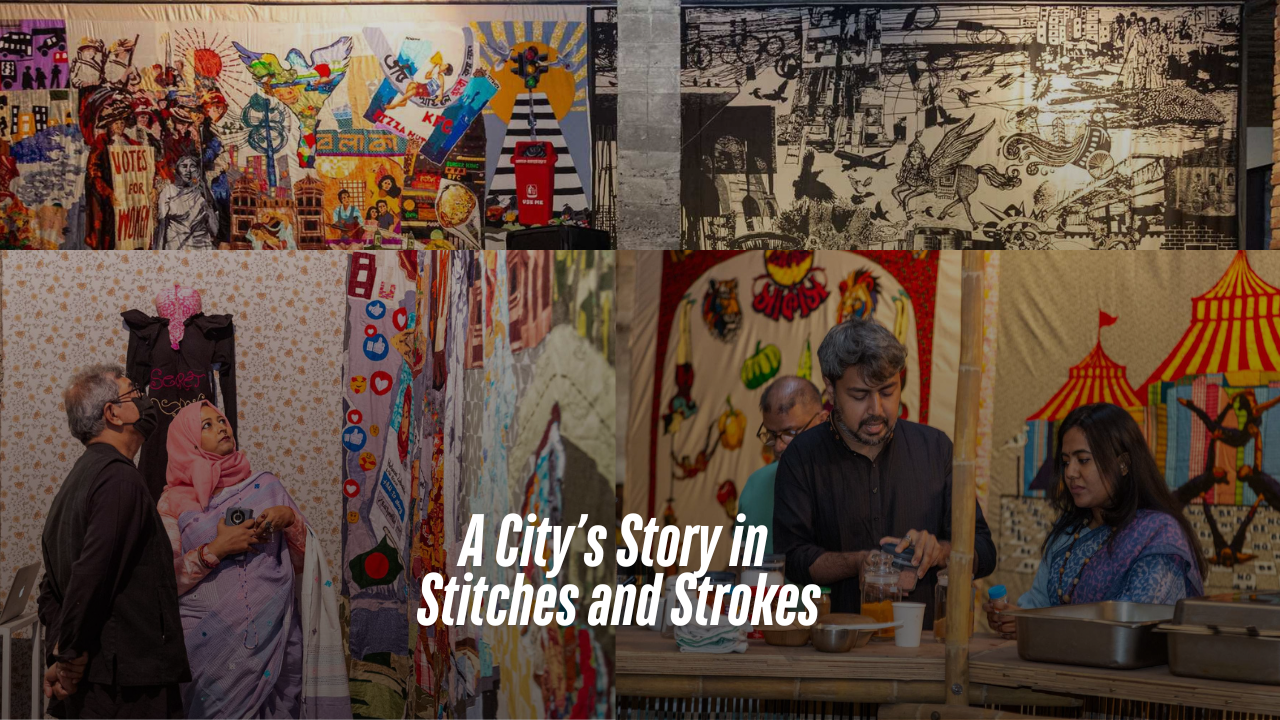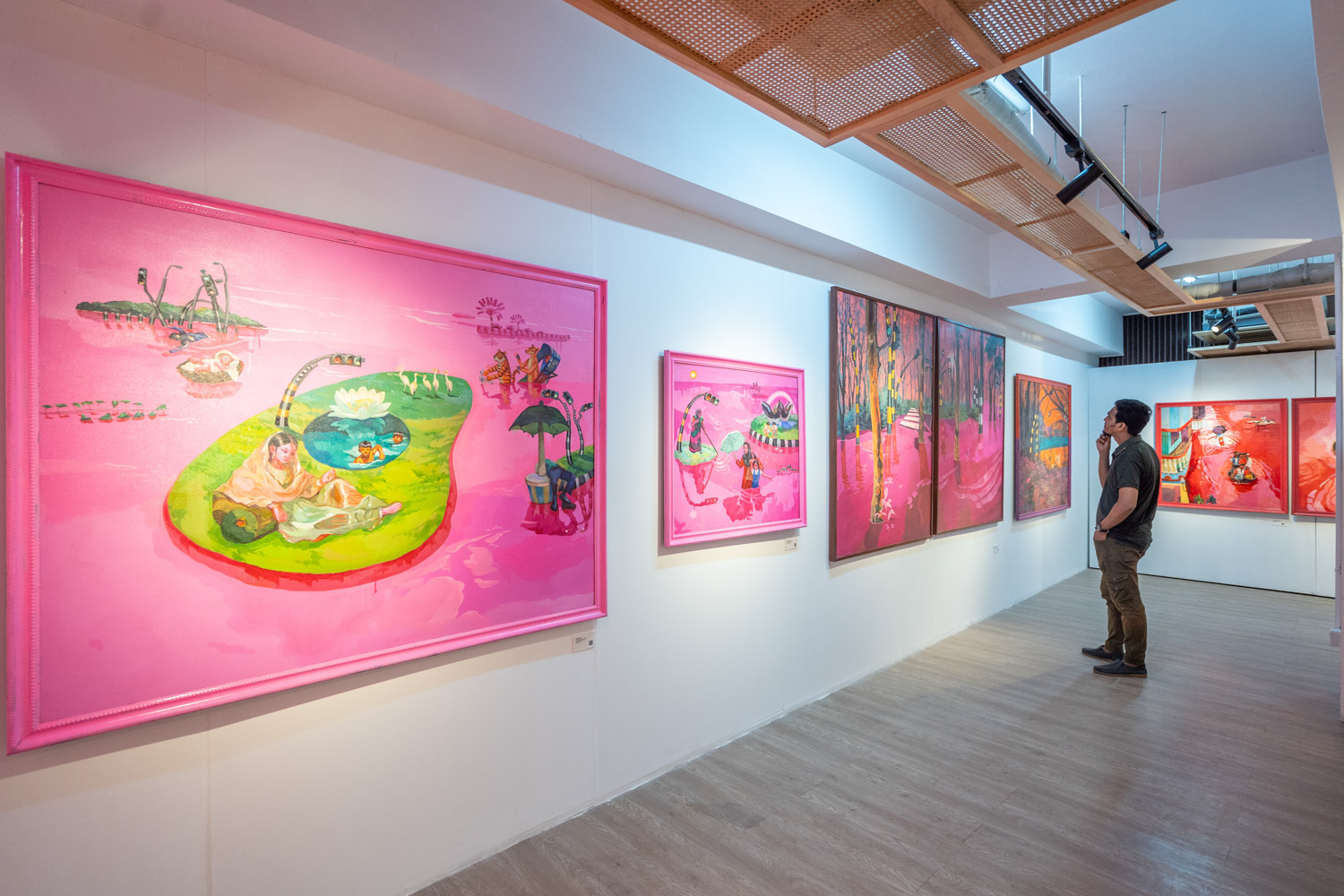
From October 19 to November 16, Platforms will host Auntora Mehrukh Azad’s solo exhibition “Solastalgia: Fragments of a Fading Horizon,” at its gallery in Pragati Sarani, Baridhara, Dhaka from 11am to 8pm daily. Her work is inspired by the universal and personal feelings of environmental change, with a particular focus on Bangladesh’s rivers and landscapes. Azad’s art explores the impact of environmental loss, displacement and transformation in rural and urban landscapes from the Sundarbans to Dhaka. All the art enthusiasts, collectors, and connoisseurs are invited to explore Azad’s evocative works.
Auntora Mehrukh Azad, a visual artist, focuses on searching the evolving relationship between nature and urban life. Through an exaggerated, artificial colour palette, her creation emphasizes on the gradual dominance of urbanization over the natural world. She has earned both MFA and BFA in Drawing and Painting from the Faculty of Fine Art, University of Dhaka.
She has also exhibited her work internationally, such as Dhaka Art Summit (2023), Yogyakarta International Art Festival (2019), and Global Women’s Art Exhibition in Thailand (2019). Her works are featured in prominent collections, including the Samdani Art Foundation and the Luciano Benetton Collection as well.
The exhibition is arranged to showcase the shifting scales of transitions. It moves from intimate depictions of flood-affected communities to broader, more abstract landscapes, highlighting the internal and external journey of displacement and environmental degradation. Each painting extends beyond the frame, symbolizing the magnitude of the crisis—far too vast to be confined to canvas.




